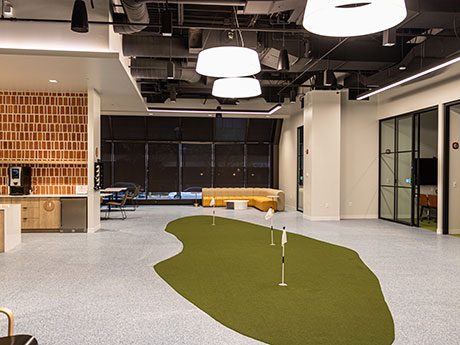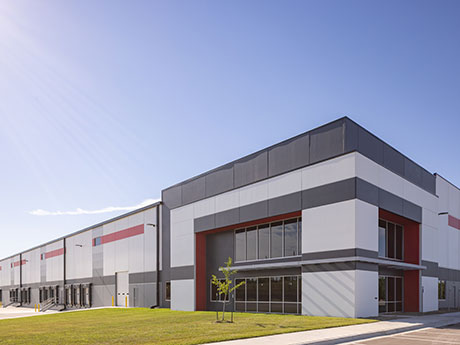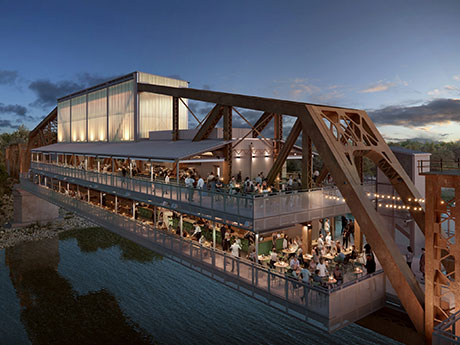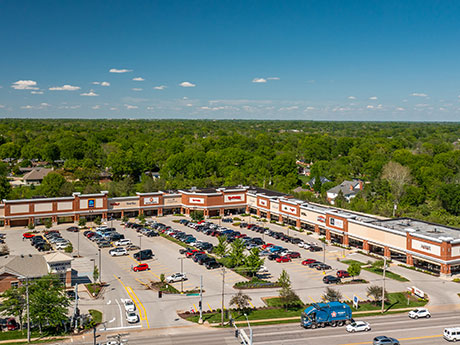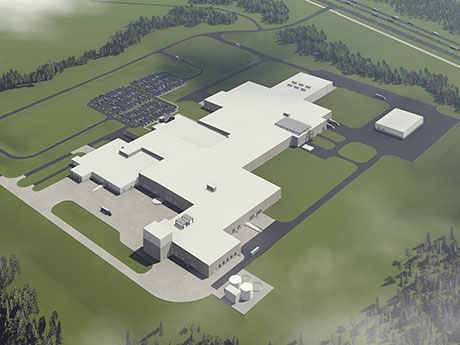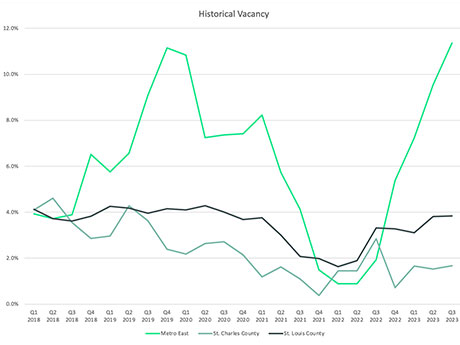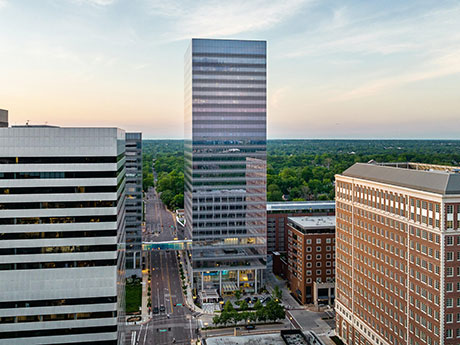By Brian Lyss and Joshua Allen, CBRE St. Louis is typical of Midwest markets in that most of its office product continues to age. In fact, 73 percent of existing office supply in St. Louis was constructed before the 1990s. In a post-pandemic environment, users are seeking out amenity-rich prime space. Out of 53 million square feet of office product in St. Louis, 2.6 million square feet is considered “prime” in nature. Prime assets are the newest assets in St. Louis, located in walkable urban areas with an abundance of amenities. In early 2021, during the early stages of the pandemic, prime office availability (21.7 percent) was on par with non-prime (20.5 percent) as the market became increasingly concerned about the future of office use. Over the past 36 months, this surplus of available office has quickly turned into a shortage of prime assets. There has been virtually no new office construction in St. Louis, hitting the lowest levels on record. This fact guarantees that prime office space will remain tight until we see new construction begin to come out of the ground. Even if new construction does commence, the construction and lending environment is such that rates are anticipated …
Market Reports
By Mike Stromberg, Opus Kansas City made the list of emerging industrial markets back in 2016, and over the last nine years has more than proven itself to be a viable, profitable and competitive environment for development. Many rightly attribute the market’s continued growth to its central location within the U.S. as well as its transportation infrastructure, which includes the city’s location on the largest navigable inland waterway, at the cross-section of three interstate highways and in the middle of cross-country rail corridors running from Canada to Mexico and from coast to coast. These are unquestionably appealing features for businesses that want and need to quickly distribute products and access customers. Other qualities often lauded include a strong skilled labor pool with an estimated 2.4 million people — nearly 23 percent between the ages of 18 to 34 — living within a 50-mile radius of the city; a cost of living up to 14 percent lower than the national average; a historically low unemployment rate; and increasing wages above the national average. What really puts Kansas City on the map for developers, though, is how the state of Missouri has created a pro-business environment that leverages and advances these strengths. …
By Garrett Cohoon, Block & Co. Inc. Realtors The commercial real estate activity in the Kansas City metropolitan area showed substantial growth in 2024 for the retail, multifamily and industrial sectors. The office sector is still seeing record vacancy rates, but the annual loss over 2023 is slowing down. According to CoStar, the office vacancy rate for 2024 is up 11.8 percent in Kansas City while the national index is at a 13.9 percent increase. That’s only 0.5 percent higher than last year in Kansas City and we expect to see that trend turn around in the next year. The retail sector saw new brands like Aritzia grow into the Kansas City market. Whataburger opened its 14th location in the past two years as drive-thru restaurants have continued to be a preference for consumers and investors alike. Wellness-based businesses and health clinics have also made good strides in the market. Kansas City has seen an increase in new experiential attractions this year, including national businesses like Puttery minigolf, Andretti indoor karting and SandBox VR. These new attractions have been key to many new development complexes and redevelopments of existing strip centers. Mattel also announced a new adventure park to be …
By Grant Mechlin, Sansone Group The St. Louis retail market showed impressive resilience in the second quarter of 2024, thanks to strong consumer spending and growing demand across various sectors. Despite challenges such as higher borrowing costs and persistent inflation, the market tightened considerably, with availability dropping to a record low 4.8 percent and well below the five-year average, according to CoStar. This strong absorption has persisted for nine consecutive quarters, highlighting the market’s ongoing strength. A major factor behind this is the limited new supply — only 770,000 square feet of retail space was added in the past year, with nearly all of it quickly absorbed, according to CoStar. This scarcity has fueled development, especially in areas like quick-service restaurants, banks and discount retailers, as tenants are forced to explore new construction as the only viable option to combat a lack of supply in the market. Meanwhile, the overall prices of goods and services in the St. Louis area saw a 3.4 percent rise over the past year, according to the Consumer Price Index. While food costs came down slightly, there was a 5.4 percent increase in energy costs and 4.3 percent for all other consumer expenditures. Despite …
By Mary Lamie, Bi-State Development, St. Louis Regional Freightway The St. Louis regional industrial market continues to be a magnet for investment, with significant capital investment dollars flowing into four target industry sectors that remain key drivers of the bi-state economy. These sectors include metals, advanced manufacturing, food and AgTech, and chemicals. They are legacy industry sectors poised for continued innovation, job creation and economic diversification, in part due to the region’s exceptional logistics and transportation assets and established talent pipelines. Metals The St. Louis metropolitan area ranks second in the United States for mineral and ore exports. With more than $2.9 billion exported in 2022, the figures prove the market is well established for metals manufacturing, processing and shipping. The metals market is expected to grow with nearly 17,000 metals industry workers already in the region, and with copper supplier Wieland making a $500 million investment at its East Alton, Illinois, facility — a move that will retain 800 jobs in the region. “Wieland is committed to a sustainable future and is taking significant steps to modernize its East Alton facility,” says Greg Keown, president of Wieland Rolled Products North America. “This effort solidifies our ability to supply the …
By Kellen Cushing, Carmody MacDonald PC Commercial and residential construction projects are inherently complex undertakings involving numerous parties working under tight deadlines and limited budgets. Change is inevitable and unpredictable in these projects, most often due to changes in project scope, incomplete or incorrect design, and unforeseen physical conditions. When something doesn’t go according to plan, it can impact the other parties’ abilities to perform their jobs in a timely manner and lead to litigation. Claims and litigation can be costly, time consuming and stressful for all parties, and may damage the relationship and reputation of the parties involved. Proper contractual planning among project owners and contractors can reduce the likelihood of litigation. Making preliminary management plans and incorporating them into the project’s contracts provides effective ways to address changes that can occur during a project and keep things moving forward. While preparation cannot always prevent roadblocks in construction projects, preemptive planning can make for much smoother sailing, even in the face of unpredictable circumstances. The best ways to avoid or minimize costly and time-consuming lawsuits include the following: Know your contract. Create a clear and comprehensive contract that defines the scope, schedule, budget, quality and responsibilities of …
By Matt Hrubes and Joshua Allen, CBRE St. Louis is located at the crossroads of the U.S. at the intersection of I-55 (north/south) and I-70 (east/west), making it a prime location for industrial real estate users and developers alike. The Greater St. Louis area is separated by the Mississippi and Missouri rivers, giving it a natural division of industrial submarkets. Each side of the Mississippi River tells a different story as it relates to industrial real estate. Metro East To the east of the Mississippi River is the Metro East industrial submarket, which was the first in the area to offer real estate tax abatement, resulting in larger industrial developments ranging in size from 500,000 square feet to over 1 million square feet. Over the last decade, this area has seen some of the largest speculative developments in the region from national developers such as Panattoni, NorthPoint and Exeter, as well as local developers like TriStar. Absorption had been at all-time highs with groups like Amazon, World Wide Technology, Geodis, Sam’s Club, P&G and Tesla leasing space as buildings were being completed. That is, until 2023 when a wave of space became available either through sublease, speculative development completions or …
By Nick Fiquette, Sansone Group Lingering effects of COVID-19 In the aftermath of the global pandemic, the St. Louis real estate market finds itself at a crossroads, continuing to see the persistent impacts of COVID-19. Corporate strategies are evolving as companies evaluate their real estate footprints to accommodate the changing work environment and desires of employees. As lease expirations loom, businesses are engaged in a delicate dance of evaluating their physical space needs. The pendulum of work-from-home policies, initially adopted to streamline footprints, appears to be swinging back. Recently, Edward Jones listed a 227,000-square-foot Class A building that it owns on the market for lease and is planning on occupying it instead. This example could serve as a positive indicator for the future of the office market. The market is transforming as companies look to accommodate employee demands, prioritizing safe, walkable areas and amenity-rich buildings. This shift is particularly evident in the struggle faced by commodity real estate, as businesses increasingly gravitate toward locations that contribute positively to the employee experience. As a result, investors are remaining cautious about purchasing office assets due to surging interest rates and uncertainties surrounding the future of the office market. Corporate giants reevaluate real …
By Max Helgeson, CBRE As the national real estate landscape undergoes transformative shifts, Kansas City has emerged as one of the region’s most attractive multifamily markets. There are a myriad of attributes making Kansas City an unrivaled destination to deploy capital in the heart of the Midwest. Here are six key areas that propel the market to the forefront of real estate investors’ considerations. Economic anchors, diversification Kansas City has one of the nation’s most diverse economies with no sector comprising more than 15 percent of overall employment. A national leader of several durable industries provides unmatched economic stability and significant risk mitigation for investors. Moreover, the metro’s strategic location in the heart of the U.S. and strong transportation infrastructure make it a favored logistical hub for corporations across the world. Finally, the market is a base for startups and entrepreneurs drawn to the area’s abundant talent pool and competitive office space rates. Strategic infrastructure, connectivity Infrastructure is a cornerstone of Kansas City’s rise to prominence. The city’s strategic network of highways, interstates, railways, fiber networks and a major airport not only facilitates connectivity but positions it as a hub for commerce. This strategic infrastructure acts as a magnet, pulling …
By John Faur, Newmark Zimmer The Kansas City industrial real estate market has been on a historical run since 2020 with over 40 million square feet of inventory added in that time frame. This run of new construction has catapulted Kansas City to the 15th largest industrial market in the country by square footage, despite only being the 31st largest MSA by population. During most of this period, the strong market dynamics which exist in Kansas City, such as strategic highway infrastructure, a centralized location, four Class-1 railroads, availability of bulk land sites and an active development community, were further amplified by the low-interest rate climate and record levels of tenant activity. The continued high pace of speculative industrial construction starts in 2022 positioned 2023 to experience a healthy amount of new deliveries, with almost 8 million square feet of speculative industrial space delivering to the market. While the financial markets presented opportunity during this run of growth, continuous rate hikes in 2023 created challenges that resulted in a significant decrease in year-over-year speculative construction starts (3.5 million square feet of speculative construction has occurred year to date in 2023 as compared with more than 13 million square feet in …
Newer Posts


